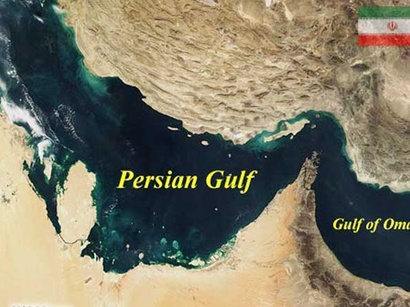Iran discovers huge gas hydrate reserves in Sea of Oman

Iran announced on Monday that the country's engineers have discovered giant gas hydrate reservoirs in its waters in the Sea of Oman, Fars news agency reported.
"Based on the latest studies in the Sea of Oman region which spreads from the West of the Persian Gulf to the Eastern part of the country, we have discovered gas hydrate reservoirs equal to the country's proven oil and gas reserves," The CEO of the project for the exploration of the Sea of Oman's gas hydrate resources, Nasser Keshavarz, said at a press conference in Tehran on Monday.
He underlined profitability of using gas hydrates along with fossil fuels to manufacture energy and heat, and said, "After exploitation, every cubic meter of gas hydrates will produce heat equal to the output of 164 cubic meters of gas."
Clathrate hydrates (or gas hydrates) are crystalline water-based solids physically resembling ice, in which small non-polar molecules (typically gases) or polar molecules with large hydrophobic moieties are trapped inside 'cages' of hydrogen bonded water molecules.
In other words, clathrate hydrates are clathrate compounds in which the host molecule is water and the guest molecule is typically a gas or liquid. Without the support of the trapped molecules, the lattice structure of hydrate clathrates would collapse into conventional ice crystal structure or liquid water.
Clathrates have been found to occur naturally in large quantities. Around 6.4 trillion (i.e. 6.4x1012) tons of methane is trapped in deposits of methane clathrate on the deep ocean floor.
Iran's Oil Minister Rostam Qasemi recently announced that 775 mcmpd of gas could be recovered from its South Pars field after current projects come on stream.
Iran, which sits on the world's second largest natural gas reserves after Russia, has been trying to enhance its gas production by increasing foreign and domestic investments, especially in South Pars.
The South Pars gas field covers an area of 9700 square kilometres, 3700 square kilometres of which are in Iran's territorial waters in the Persian Gulf. The remaining 6000 square kilometres, that is the North Dome, are in Qatar's territorial waters.
The Iranian gas field contains 14 trillion cubic meters of natural gas, about eight per cent of the world's reserves.
Here we are to serve you with news right now. It does not cost much, but worth your attention.
Choose to support open, independent, quality journalism and subscribe on a monthly basis.
By subscribing to our online newspaper, you can have full digital access to all news, analysis, and much more.
You can also follow AzerNEWS on Twitter @AzerNewsAz or Facebook @AzerNewsNewspaper
Thank you!
